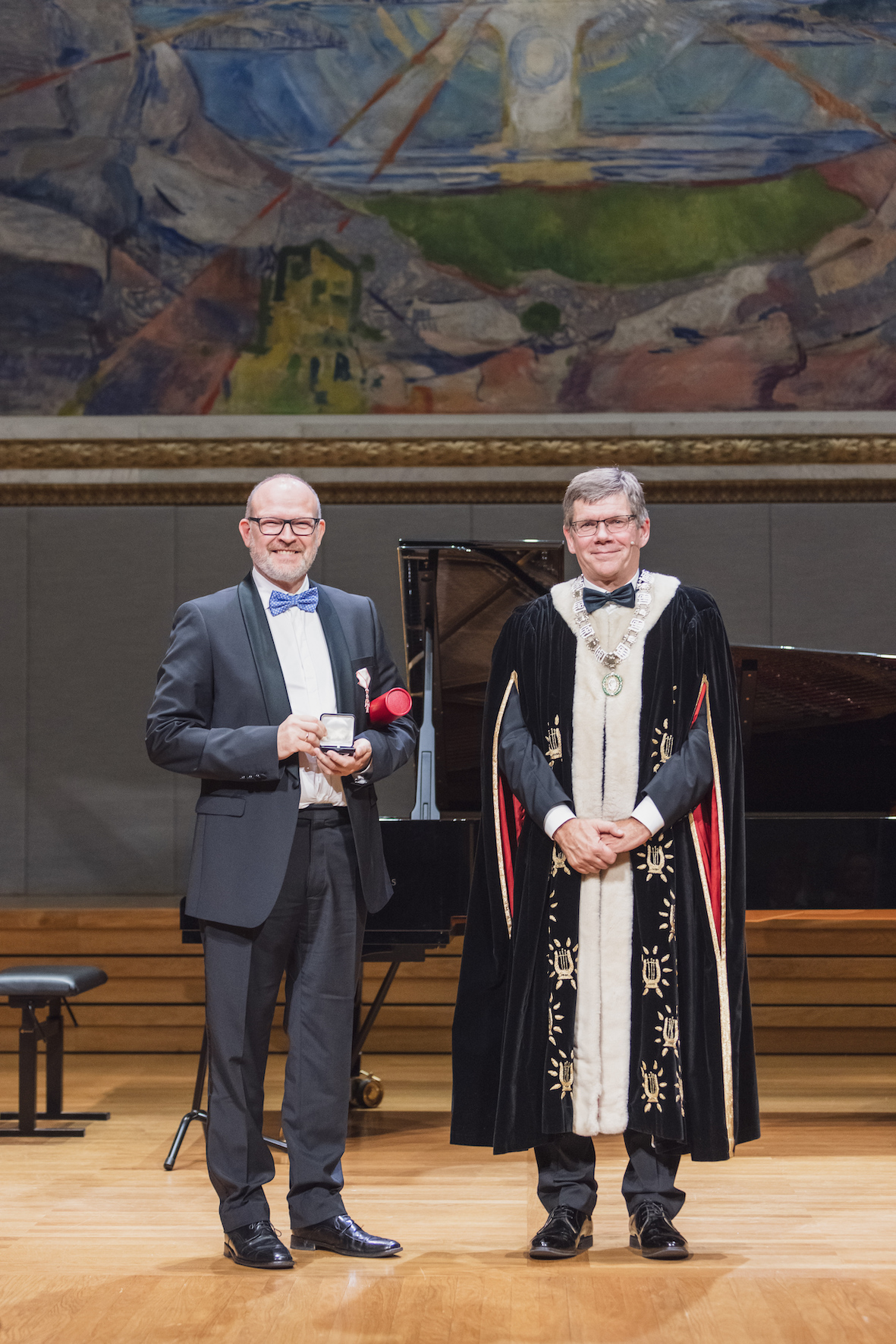The future of science is interdisciplinary for Poul Nissen, Anders Jahre Medical Prize 2021 winner
Poul Nissen, Director of DANDRITE, received the Anders Jahre Senior Medical Prize 2021 in Oslo, Norway in November.

The Anders Jahre Medical Prize was awarded to Prof. Nissen, Director of the Danish Research Institute of Translational Neuroscience, DANDRITE, in recognition for his ground-breaking research on the structure and function of membrane proteins. We caught up with Prof. Nissen after the award ceremony in Oslo, Norway to hear what impact he expects the recognition will have on his career and future approach to science.
A recognition of the importance of the molecular approach
Prof. Nissen graciously acknowledges that the Jahre Prize in Medicine is prestigious and widely recognised, and as such will have a positive impact on his career. He explains:
“it is a commitment, as I clearly feel the ambition to step up in terms of the new projects I would propose. They would be at a more complex molecular medicine level. But I also feel encouraged to use the recognition to aim higher and take bigger risks.”
Prof. Nissen does not want the award to serve as a retrospective, as if to give the impression ‘well that was what we reached’. Instead,
“this should encourage us to aim for new interdisciplinary approaches in molecular medicine where one both tries to nail very difficult questions and mechanisms in cell biology and molecular physiology, and at the same time tries to use that information to drive discovery and biotechnology forward.”
The Prize is undoubtedly a recognition of the importance of the molecular approach his research has taken. Prof. Nissen also takes it as a pivotal point in time where the structural biology approaches are integrating with molecular cell biology technologies, opening up new doors and raising the level of ambition.
EMBL partnership has offered broader perspectives
Prof. Nissen recognises that the Nordic EMBL partnership has played an important role in his career. He has gained a much broader perspective locally with the establishment of DANDRITE, as well as through the wider Partnership in molecular medicine, anchored by the European Molecular Biology Laboratory (EMBL).
Through the Partnership he has been inspired by opportunities of interdisciplinary approaches, looking to these as important for future advancements. The Partnership encourages cross-node research collaboration and knowledge exchange. Prof. Nissen explains that at DANDRITE, they are challenging themselves with questions such as:
“How can we combine some of the different approaches represented in the Partnership - genetics, microbiology, microbiome, signalling, systems biology, and biotechnology - with our own broad neuroscience approach?”
These may be challenging questions, but they also have great potential and continually drive Prof. Nissen to seek new solutions.
Interdisciplinary collaborations require rethinking the rules
For the next steps in his career Prof. Nissen wants to focus on developing a more integral approach.
“Not just thinking about how molecules work and interact, but also why that is important to how a cell works, and how it defines how an organism reacts and behaves, as well as what goes wrong in disease,” he explains.
This poses the difficult challenge of needing to think in very new ways.
“I need to grasp and understand behavioural models, genetics and cell biology, that previously were something I was only noting. However, now I need to really integrate it. And it is the same for my collaborators; they need to start thinking about molecules and how they work. So we are all faced with huge challenges of needing to understand each other much better.”
“This certainly doesn’t make things less complex than before, but at the same time the possibilities are much bigger,” Nissen points out. “A few years ago we couldn’t have done this, but now we can.”
Established scientific traditions can pose challenges to taking on interdisciplinary approaches.
For example, traditionally, co-authors are held responsible for all data and results reported in a published scientific article. “That is very difficult to meet in a future where you might combine entirely different expertise,” Nissen says.
“We need to find new rules for how we interact in interdisciplinary collaborations. This is not to say that we should be less concerned with data quality, significance, proper conduct and so forth. It just becomes more and more difficult to hold every single author responsible for all aspects of a publication.”
Furthermore, interdisciplinary collaborations can muddle authorship, as Prof. Nissen highlights: “how do we acknowledge that several people contribute importantly with different inputs to a paper? Perhaps we should start publishing separate, small papers back-to-back that are interlinked on a bigger question rather than a single paper with 47 supplementary figures and appendices.” And, authorship is tightly linked to researcher assessment.
Prof. Nissen emphasizes that “we have to face these challenges, as it is important that we actually step up our level of ambition in interdisciplinary research.”
The key is communication and trust
Prof. Nissen pointed out that it is very important that a researcher can explain what they do to a broader audience. This gives other people the chance to grasp the quality and significance of scientific contribution.
Also important are strong research connections, built on trust, between different laboratories. He emphasises: “now it is possible to do these things, but it also requires that we change our approach to collaborative research. We need to rely more on each other but we need to also convey very clearly to our partners how we do things.”
Communication and trust encourage collaboration and knowledge sharing, and are key for Prof. Nissen for whom the future of science is increasingly interdisciplinary.
Prof. Nissen is very grateful to Norway and the Jahre Prize committee for this honour and appreciates the new level of ambition it sets for his career.